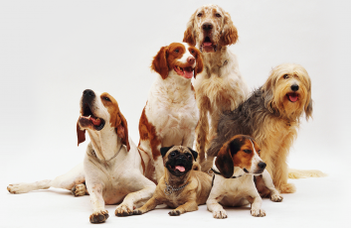When do dogs reach adulthood?

So far, dogs’ behavior and neural processes have been studied in individuals over the age of one year. In research, it is still a generally accepted assumption that dogs over one year of age are adults. But when does the brain maturation process end exactly? Are there any differences in the rate of development between breeds due to high morphological variability (e.g. size, muscle and skull thickness)? Just imagine a Yorkie vs. a Great Dane. Do the two breeds need the same amount of time to fully develop their nervous system? Researchers at the Department of Ethology at Eötvös Loránd University sought to answer these questions by observing the dogs’ sleep.

“Sleep EEG measurements can be used to track the brain’s maturation processes” explains Vivien Reicher, one of the co-first authors of the study. “In the early stages of mammalian life, a significant amount of sleep consists of the “dreamy sleep phase”, the so-called REM sleep, which plays an important role in the development of the nervous system. In later development, slow-wave activity (NREM sleep), which can be linked to deep sleep, plays a more important role. In adolescence, the decrease of NREM reflects the disappearance of overproduced synapses (connections between nerve cells). ”
“Dogs (along with the owner) are happy to spend their afternoon nap in our sleep lab. They allow us to attach electrodes on the surface of their skin; it is a completely painless procedure, similar to that is used in young children. This is how we were able to examine the sleep parameters of dogs at the ages of 2-14 months, ”adds Dr. Nóra Bunford, the other co-first author of the research.

Owner and puppy with electrodes attached to skin during the sleep measurement.
Our findings are mostly consistent with human studies. Explaining the results, Reicher said that dogs at the ages of 2-3 months spent a lot of time in REM sleep. As age proceeded, the time spent in REM sleep decreased until the age of 6 months, after which time spent in REM did not change. The time spent in drowsiness (the superficial sleep phase) increased with age, so older dogs spent more time in drowsiness.
“One of our most interesting results is regarding the time spent in deep sleep (NREM sleep). We assumed an age effect on NREM sleep, as it has been described in previous mammalian sleep studies. However, in dogs we did not find such an age effect.” adds Dr. Anna Vargáné Kis, one of the authors of the study. “But between 8 and 14 months of age, the slow-wave activity (slow brain oscillations) in NREM sleep decreased with age. We also found a size effect; less slow-wave activity was observed in larger dogs than in smaller dogs. ”
“Our results show that examining the sleep parameters is an effective method for understanding the brain maturation processes in dogs and for detecting developmental differences between breeds,” says Dr. Márta Gácsi, the lead researcher of the study. “To get a complete picture of how sleep changes with age and what factors affect the development, more research is needed. For now, it is certain that in most cases the maturation processes in the dog’s brain are not complete by the age of one year. ”
Reicher, V., Bunford, N., Kis, A. et al. Developmental features of sleep electrophysiology in family dogs. Sci Rep 11, 22760 (2021). https://doi.org/10.1038/s41598-021-02117-1

